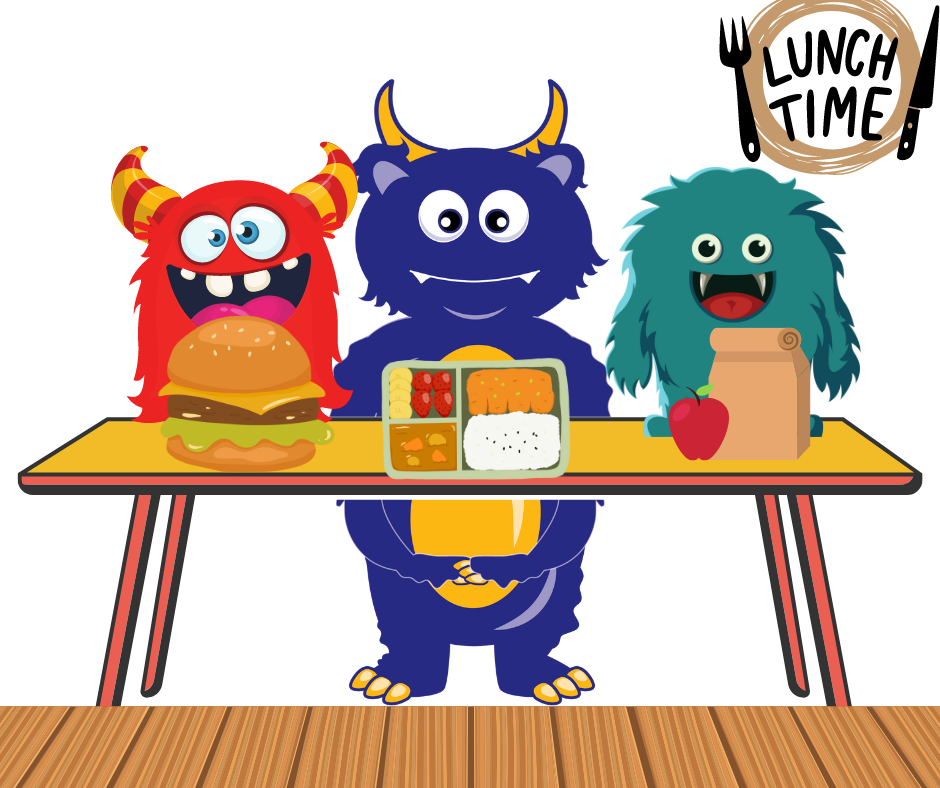
Time for Lunch!!!!! Those are magical words for many. But not all. One of the goals of an Occupational Therapist is to help individuals become as independent as they can be with Life Skills. Eating just happens to be one of the BIGGEST Life Skills. Lunchtime in a school cafeteria can be one of the most stressful times for a lot of kids, especially those with physical, sensory, emotional, and social limitations.

There are so many factors that may influence a child's ability to eat their lunch at school. Just a few may be the excessive noise, the large number of children with unpredictable behaviors, bright lights, and unfamiliar smells to a sensitive nose. There is a sense of quickly needing to eat and the urgency to finish to get out to head to recess. Whew!
You as a parent or caregiver, can feel helpless in these circumstances, however, we would like to offer some suggestions that may make the experience a little more productive for your child in hopes of ensuring your child receives proper nutrition and the lunch you so carefully prepared doesn't get dumped into the garbage.
First, we would like to recommend communicating clearly with the school professionals that oversee lunchtime. If needed, request an observation, or if your school allows, attend a lunch with your child so you can get a sense of the environment. If your child has an IEP or 504, your child has a right to an accommodating lunchtime and education, and a plan may need to be put in place.
-Allowing extra time for a child to be at lunch by leaving early from class, or staying later for lunch.
-Opportunity for a quiet small lunch group in a different environment if so chosen
-Familiar adult to provide supervision during eating
-Seating accommodations if not safe in provided seats
-Use of special adapted utensils and or plates/trays
What Can you do from Home?
-Make sure any small baggie or container that you send is able to be opened by your child. Practice at home.
-Use a Bento-type dish with separated compartments when you can.
-Pre-cut and/or slice foods at home for ease of eating.
-When able provide finger foods that are nutrient-dense such as cheese sticks, cut-up mini sandwiches, veggies with dip, shredded chicken, and peanut butter crackers.
-Make sure any items that you send that you hope to come back are labeled with your child's name and teacher's name.
-Create a visual menu in a common area in which your child is able to help create his/her meal. Ensure you have the overall control, but he/she gets to make choices amongst the options you provide.
-Teach your child what can and what cannot be thrown away. Kids do not realize unless told that unopened packages, such as a fruit roll-up, are literally money being thrown away when emptied into the garbage when not opened.
-Consider providing a wet one in your child's lunch box. Teach your child how to wipe his or her face and/or hands following their lunch. I've been at school all day long with these kids. The afternoon "look" versus the getting to school "look" is quite different! Teaching a child hygiene early serves them well as they spend a day with peers.
-Think about including something special occasionally giving your child a surprise to look forward to amongst their lunch items. A sweet note, picture, or sticker goes a long way when a child may be having a rough day.
 Snack and Lunchtime are definitely significant parts of the school day that need to be considered in regard to the health and comfort of your child during their academic day. We hope the considerations above help you and your child ease the transition to this portion of their day.
Snack and Lunchtime are definitely significant parts of the school day that need to be considered in regard to the health and comfort of your child during their academic day. We hope the considerations above help you and your child ease the transition to this portion of their day.
If you would like anyone to help problem solve any concerns you have with any of your child's Life Skills during their academic day, feel free to contact us through email below.
-Miss Connie & Otie

